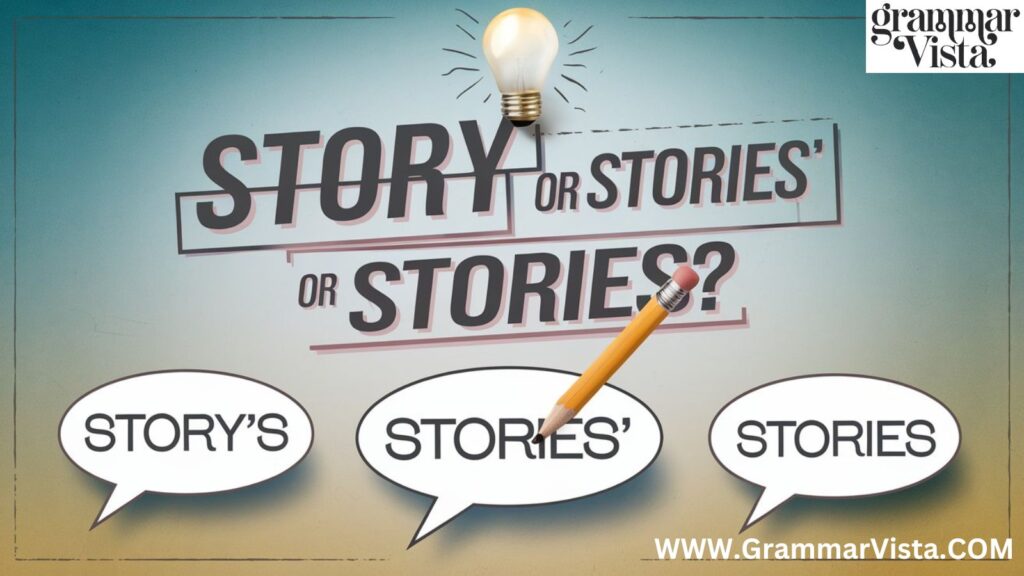Ever found yourself staring at a word, wondering if that pesky apostrophe belongs before or after the ‘s’? Or maybe you’ve scratched your head, pondering whether you need an apostrophe at all? You’re not alone. As a grammar enthusiast, I’ve seen countless writers, from novices to pros, grapple with these confusing constructions. Let’s dive into the world of possessives and plurals, untangling the knots of “story’s,” “stories’,” and plain old “stories.”
Understanding the gold rate in Pakistan can be challenging. It’s important to consider expert opinions. Market analysts and financial advisors provide valuable insights. These experts help navigate the complexities of the gold market. Let’s explore their perspectives.
The Singular Possessive: Story’s
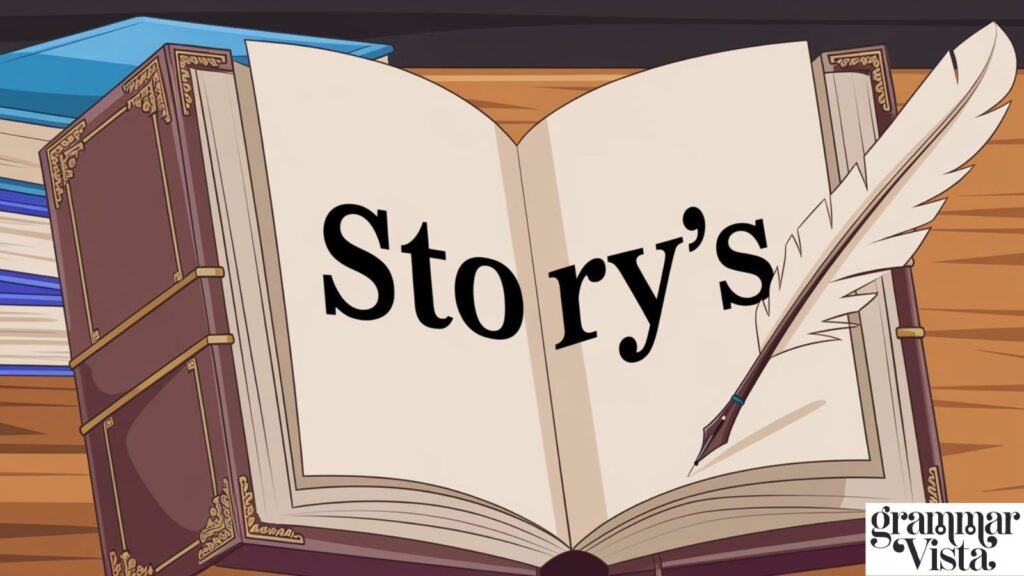
When we’re talking about something belonging to a single story, we use the singular possessive form: story’s. This little apostrophe packs a punch, showing ownership or a close relationship to that lone tale.
For example:
- The story’s ending left me in tears.
- I couldn’t get over the story’s plot twist.
- The story’s characters felt like old friends.
In each case, we’re referring to an aspect belonging to one specific story. It’s a straightforward grammar rule, but it’s amazing how often it trips people up.
The Plural Possessive: Stories’
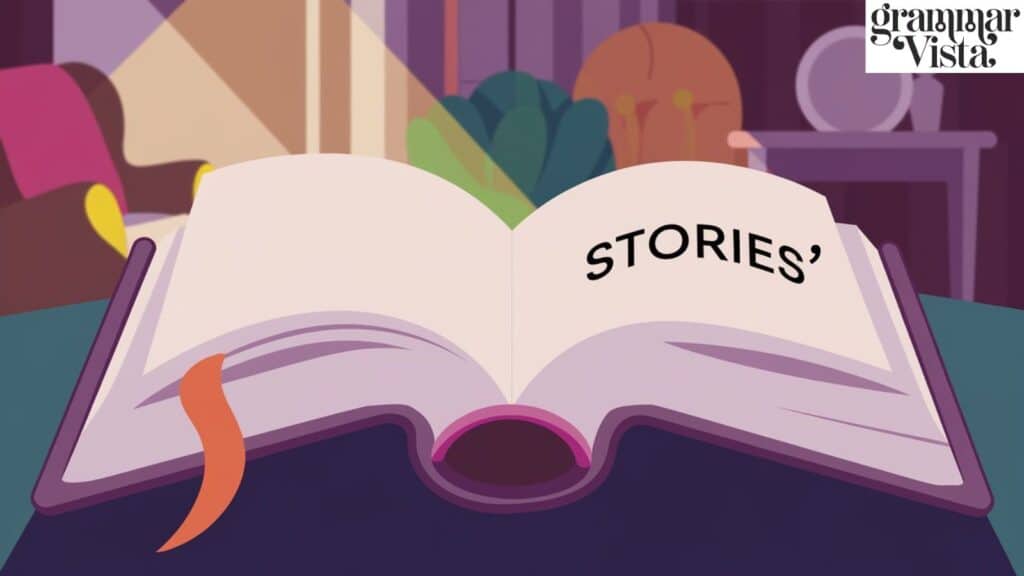
Now, what if we’re dealing with multiple stories that own or possess something? That’s where the plural possessive comes into play. When we have more than one story and they collectively own or relate to something, we place the apostrophe after the ‘s’.
Consider these examples:
- The stories’ submissions flooded the publisher’s inbox.
- I was blown away by the stories’ creativity.
- The stories’ themes resonated with readers across generations.
Here, we’re talking about aspects belonging to or associated with multiple stories. It’s a subtle shift, but it makes all the difference in clear communication.
Read More about Business’ or Business’s?
Just Plain Stories: No Apostrophe Needed
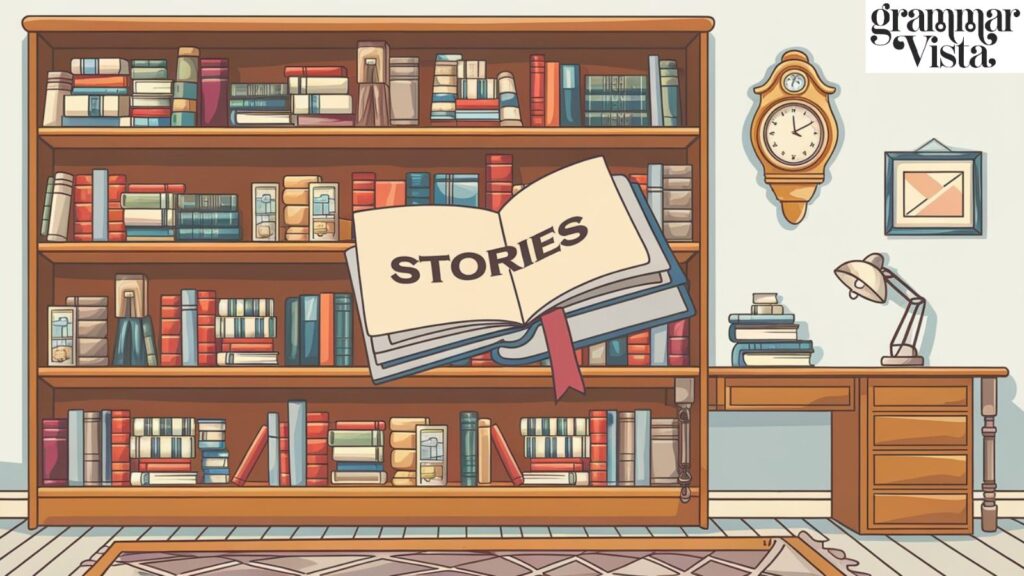
Sometimes, you don’t need an apostrophe at all. When you’re simply talking about more than one story without any sense of possession, “stories” is all you need.
For instance:
- I love reading bedtime stories to my kids.
- She writes horror stories that keep me up at night.
- The anthology features stories from emerging authors.
In these cases, we’re dealing with the singular plural form – the plural of “story” without any possessive qualities.
Common Confusions and How to Avoid Them
Mixing Up Singular and Plural Possessives
One of the most frequent errors I see is the misuse of possessive forms when dealing with plurals. It’s easy to slip up and write “story’s” when you mean “stories'” or vice versa.
Incorrect: The story’s characters were all unique (when referring to characters from multiple stories) Correct: The stories’ characters were all unique
The Dreaded Greengrocer’s Apostrophe
Named after the tendency of some shopkeepers to misuse apostrophes on signs (apple’s for sale!), this error involves adding an apostrophe to a simple plural.
Incorrect: I read three story’s last night. Correct: I read three stories last night.
Possessive Pronouns and the Unnecessary Apostrophe
Remember, possessive pronouns like “its,” “hers,” and “yours” never need an apostrophe. “It’s” is a contraction of “it is,” not a possessive.
Incorrect: The book lost it’s cover. Correct: The book lost its cover.
You might be interested in Today’s or Todays?
Real-World Scenarios: Putting It All Together
The Literary Magazine Dilemma
Imagine you’re an editor for a literary magazine. You’re writing an email to your team about the latest issue. Here’s how you might use these forms correctly:
“Team, I’m thrilled with this month’s stories’ quality. Each story’s unique voice shines through, and the readers’ stories’ section is particularly strong. Remember, we’re still accepting stories for next month, so keep those submissions coming!”
Notice how we’ve used both singular and plural possessives, as well as the simple plural form.
The Bookstore Conundrum
You’re a bookstore owner creating signs for different sections. Here’s how you might label them:
- “Children’s Stories” (plural, no possession)
- “Each Story’s Journey” (singular possessive)
- “Authors’ Corner: Where Stories’ Origins Are Revealed” (plural possessive)
The Writing Workshop Scenario
You’re leading a writing workshop and want to discuss the elements of storytelling. Your agenda might look like this:
- Exploring each story’s structure
- Analyzing the stories’ themes
- Developing compelling stories (no apostrophe)
- Understanding the story’s arc vs. the stories’ arcs
The Importance of Context in Using Possessive Forms
Context is key when deciding which form to use. Always ask yourself:
- Am I talking about one thing or many?
- Is there a sense of ownership or close relation?
- What exactly owns or is closely related to what?
These questions will guide you to the correct form, ensuring your possessive word order is spot on.
Why It Matters: The Impact on Clear Communication
You might wonder, “Does it really matter if I mix up these forms?” The answer is a resounding yes! Proper use of possessives and plurals is crucial for clear communication. Misuse can lead to confusion, misinterpretation, or even unintended humor.
Imagine the difference between:
- “The stories endings were surprising.” (Incorrect: Are we talking about multiple endings for each story?)
- “The stories’ endings were surprising.” (Correct: Each story had a surprising ending)
Or consider:
- “The story’s heroes gathered for a final battle.” (One story, multiple heroes)
- “The stories’ heroes gathered for a final battle.” (Heroes from multiple stories)
These small changes in form can significantly alter the meaning of a sentence, affecting how your readers understand your message.
Read More grammar lessons on GrammarVista
Tips for Mastering Possessives and Plurals
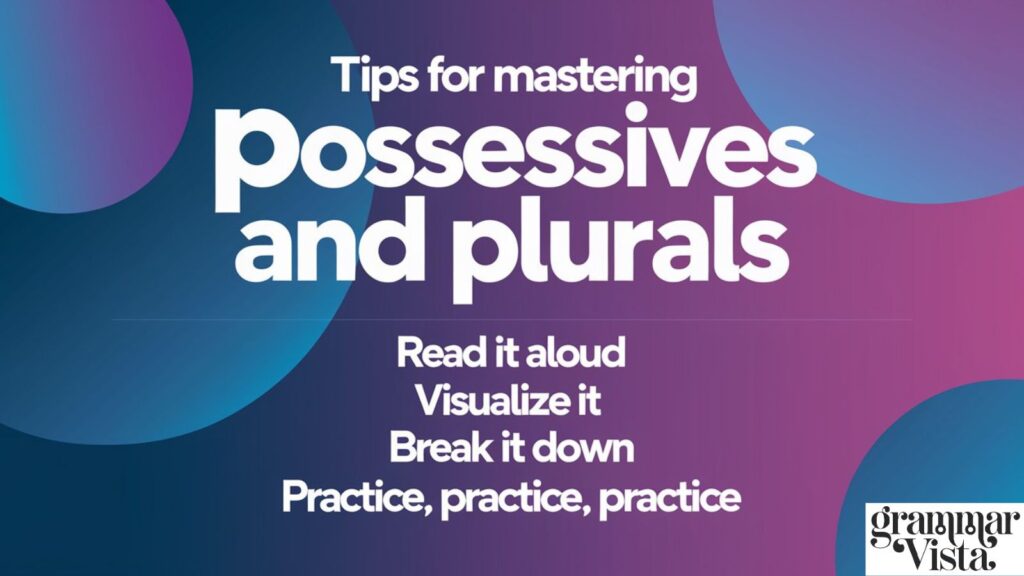
- Read it aloud: Often, our ears catch errors our eyes miss.
- Visualize it: Picture what you’re describing. Is it one story or many?
- Break it down: Identify the noun and what belongs to it.
- Practice, practice, practice: The more you work with these forms, the more natural they’ll become.
Conclusion:
As we’ve seen, the difference between “story’s,” “stories’,” and “stories” is more than just a matter of punctuation. It’s about precision in language, about conveying exactly what we mean. For the grammar enthusiast, these nuances are a playground of expression. For the everyday writer, they’re tools for clear communication.
Remember, language is alive, always evolving. What matters most is not rigid adherence to rules, but the ability to communicate effectively. By understanding and correctly using these forms, you’re not just following grammar rules; you’re enhancing your ability to connect with your readers, to tell your stories – or should I say, your stories’ messages – with clarity and impact.
So the next time you find yourself hesitating over an apostrophe, take a moment to consider the context, the ownership, the number. Are you dealing with one story’s plot or the collective themes of many stories? Are you submitting stories or managing stories’ submissions? With practice, you’ll find these distinctions becoming second nature, allowing your writing to flow smoothly and your meaning to shine through clearly.
In the end, mastering these subtleties of language isn’t about impressing others with your grammar skills. It’s about respecting your readers, valuing clarity, and giving your ideas the precise expression they deserve. Whether you’re crafting a novel, penning an article, or simply sending an email, your command of these forms will serve you well, ensuring that your stories – in whatever form they take – are told exactly as you intend them to be.

